
Roots
To consider the strands that crown our heads solely as biological matter would overlook a profound truth ❉ for ancient African cultures, hair was a living archive, a visible testament to identity, status, and spirit. Its care was not merely a physical act but a dialogue with heritage, a connection to community, and a quiet acknowledgment of one’s place within the cosmic order. We embark on a thoughtful exploration, peeling back layers of time to understand how these cultures nurtured their hair, a practice deeply intertwined with their very being.

Hair’s Structural Uniqueness
The distinct structural properties of textured hair, particularly its elliptical cross-section and varied curl patterns, influenced the methods of care employed by ancient African societies. These natural characteristics meant that moisture retention and protection from breakage were constant considerations. Unlike straight hair, which allows natural oils to travel down the shaft with ease, the coils and kinks of textured hair create natural barriers, making it prone to dryness. Ancient practices, therefore, revolved around hydrating and sealing in that vital moisture, a foundational principle that remains relevant today.
Consider the Hair Follicle’s Journey. Each strand emerges from its follicle, growing in a spiral or zig-zag formation. This shape dictates how light reflects, how moisture distributes, and how the hair behaves.
Ancient African cultures understood, perhaps intuitively, these unique needs. Their methods were not accidental; they were a direct response to the inherent characteristics of the hair itself, refined over countless generations.

Systems of Hair Classification
While modern systems classify textured hair using numerical and alphabetical scales (like 3A, 4C), ancient African societies likely possessed their own nuanced ways of distinguishing hair types, though perhaps not formalized in written records as we might expect. These classifications would have been based on observable qualities ❉ curl tightness, density, length potential, and how the hair responded to various treatments and styles. Such distinctions were less about rigid categories and more about understanding individual hair’s inherent qualities for appropriate care and styling.
A person’s hair could convey their age, marital status, occupation, religious affiliation, and even their tribe. This deep social communication inherent in hair implied an underlying recognition of its diverse forms.
Ancient African cultures viewed hair not merely as adornment, but as a profound symbol of identity, status, and spiritual connection.

Essential Terms for Textured Hair
The language surrounding textured hair in ancient Africa would have been rich with terms describing its varied states and the tools used in its upkeep. While direct translations are often lost to time, we can infer the importance of certain concepts from archaeological findings and historical accounts.
- Combs ❉ Archaeological discoveries across ancient African civilizations, including Kush and Kemet (modern Sudan and Egypt), show combs dating back over 5,500 to 7,000 years. These were often crafted from wood, bone, or ivory, sometimes bearing symbols of tribal identity or spiritual significance. The wide spacing between teeth on many of these ancient combs suggests a deliberate design for handling textured hair, which is known for its fragility.
- Oils ❉ Natural plant oils and butters were fundamental. Shea butter, derived from the Karite tree, was widely used across the Sahel belt for both skin and hair, valued for its ability to seal in moisture and offer protection. Other oils from local flora would have served similar purposes, providing slip for detangling and luster.
- Clays and Pigments ❉ Various clays, such as red ochre used by the Himba people, served not only as cosmetic adornments but also as protective coatings, shielding hair from environmental elements and adding weight for certain styles.
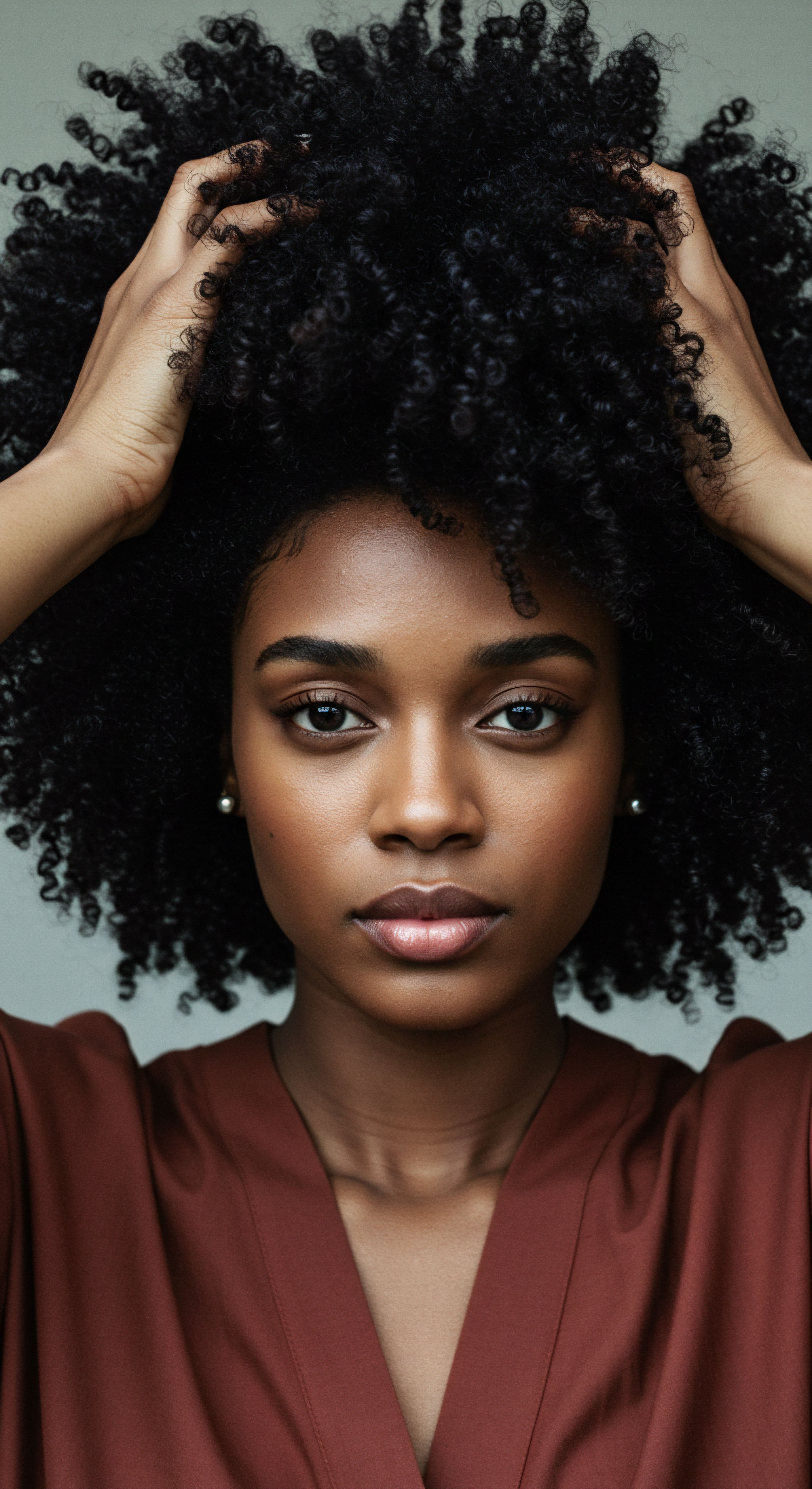
Hair Growth Cycles and Influencing Factors
The understanding of hair growth cycles, even without modern scientific terminology, was likely integrated into ancient African hair care practices. Periods of growth, rest, and shedding would have been observed and perhaps attributed to natural rhythms or spiritual influences. Factors like diet, climate, and overall health would have intuitively been understood to affect hair’s vitality.
A well-nourished body, sustained by traditional African diets rich in plant-based foods, would naturally contribute to healthier hair. The communal aspect of hair care also meant that knowledge of what sustained healthy hair was shared and adapted within communities, responding to local resources and environmental conditions.
Consider the effects of the African sun. Intense solar radiation and dry climates would necessitate protective measures. Styles that kept hair covered or compactly arranged, alongside the use of moisturizing agents, served to guard against moisture loss and sun damage. These environmental pressures shaped practices, leading to resilient and effective methods of care.
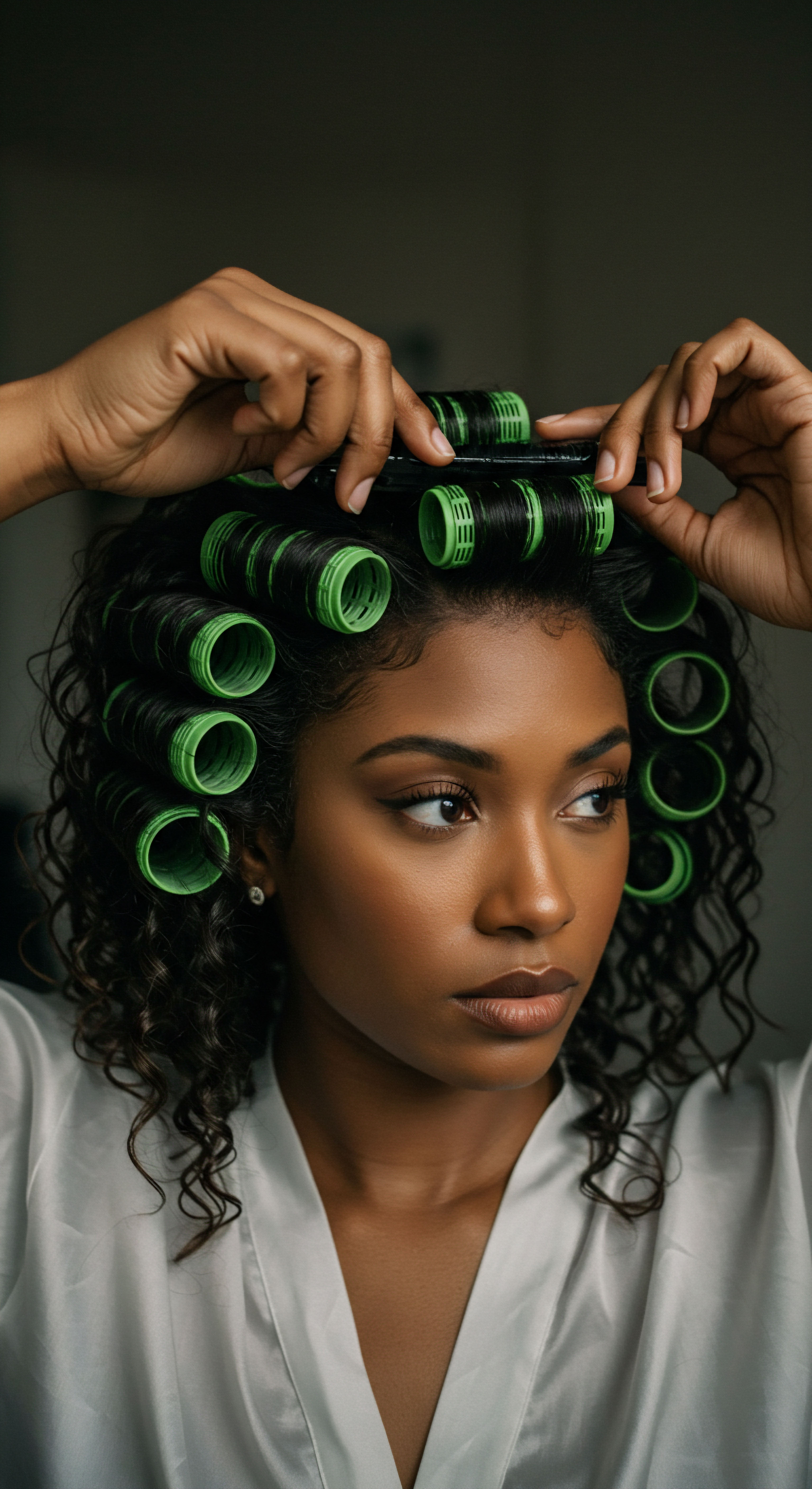
Ritual
Stepping from the foundational understanding of hair itself, we now consider the daily and periodic practices that transformed care into a shared experience, a quiet tradition. These were not simply routines; they were moments of connection, learning, and self-expression. Ancient African hair care was a testament to patience and communal bonds, where hands moved with purpose, imparting wisdom alongside nourishment. This section peels back the veil on the practical methods, tools, and styles that brought hair to life in these vibrant societies.

Protective Styling Encyclopedia
Protective styles were central to ancient African hair care, serving multiple purposes beyond mere aesthetics. They shielded hair from environmental damage, minimized manipulation, and often conveyed social messages. Braids, twists, and locs were not just styles; they were a language, indicating age, marital status, social standing, and even tribal affiliation.
Some common protective styles included:
- Braids ❉ Dating back as far as 3500 BCE in ancient Egypt, braids were ubiquitous. Cornrows, a specific type of braid plaited close to the scalp, have been traced to 3000 BCE. These could be simple or complex, adorned with beads, shells, or other decorations. The practice of braiding often took hours or even days, transforming it into a social gathering where stories and knowledge were exchanged.
- Twists ❉ Similar to braids but using two strands, twists offered another versatile protective option. They were often precursors to locs or worn as stand-alone styles.
- Locs ❉ Priests of the Ethiopian Coptic Orthodox Church wore dreadlocks as early as 500 BCE. The Himba tribe in Namibia used a mixture of ground ochre, goat hair, and butter to create and maintain their locs, which also conveyed age and marital status. These styles held spiritual significance, sometimes linking individuals to the divine or signifying warrior status.
- Hair Threading ❉ Among the Yoruba people of Nigeria, dating to the 15th century, ‘Irun Kiko’ or hair threading was a popular protective style. This method involved wrapping sections of hair with flexible wool, cotton, or rubber threads, creating three-dimensional patterns. It was used to stretch hair and help with length retention by protecting strands from breakage.

Natural Styling and Definition Techniques
Beyond protective styles, ancient African cultures utilized various techniques to define and enhance the natural texture of hair. These methods relied on natural resources and a deep understanding of hair’s needs.
The goal was often to accentuate the hair’s inherent coil and volume. For instance, the Afro, a voluminous style showcasing natural texture, was worn by various groups like the Wolof, Mende, and Yoruba. Defining curls likely involved applying moisturizing agents like plant oils and butters, then manipulating the hair to clump and set. The richness of indigenous plants provided a natural pharmacy for hair care.
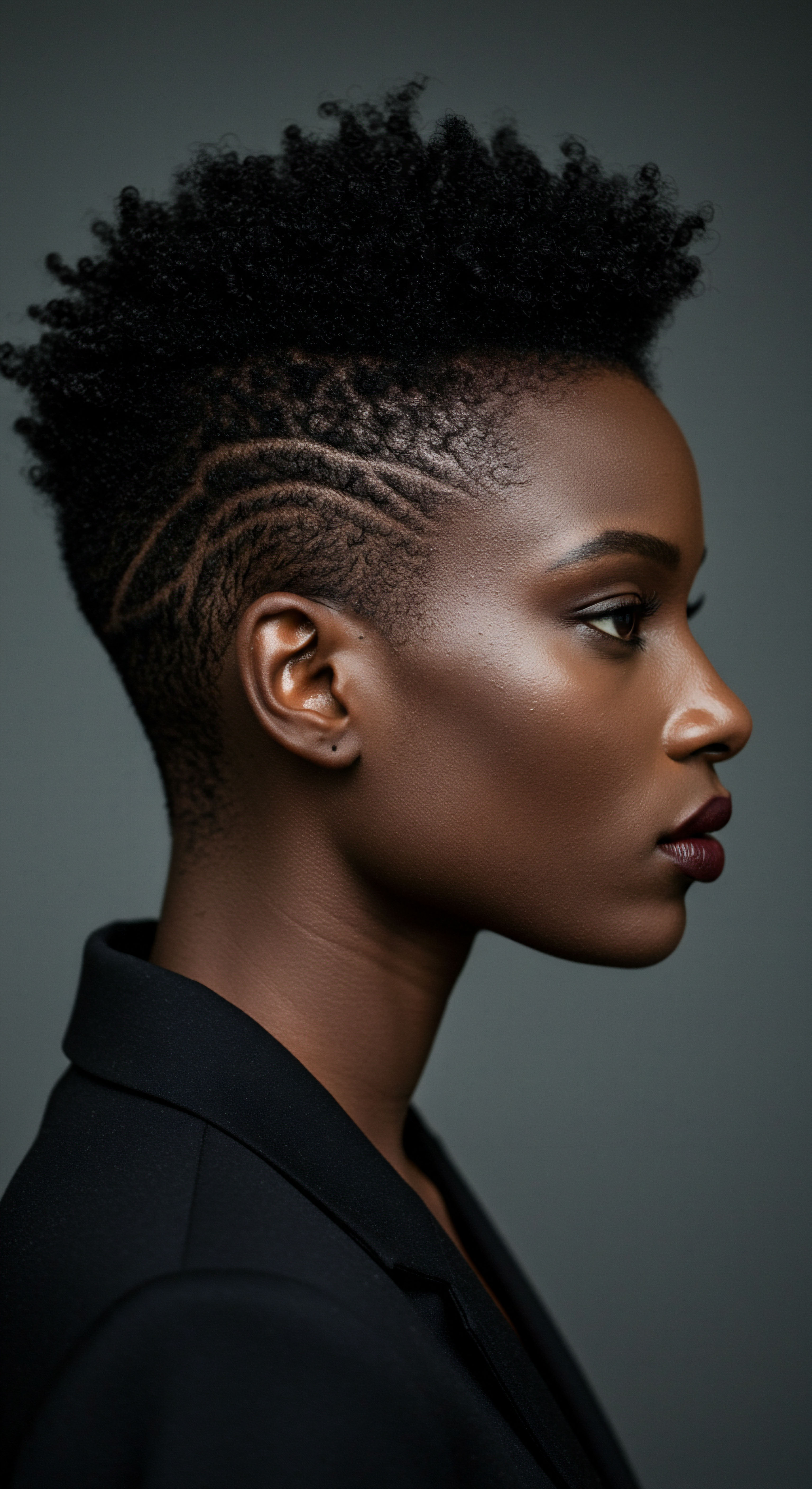
Wigs and Hair Extensions Mastery
Wigs and hair extensions were not inventions of modern times; they were skillfully employed in ancient African societies, particularly in Egypt as early as 2700 BCE. These were often crafted from human hair, wool, or plant fibers and were intricately braided or styled. Wigs served practical purposes, like sun protection for shaved heads, and also signified social status, wealth, and religious devotion. The more elaborate the wig, the higher one’s standing.
Extensions, often made from natural materials or even animal hair, were incorporated into existing styles to add length or volume. This practice highlights a long-standing appreciation for diverse hair presentations.
Hair care in ancient Africa was a social ceremony, a communal space where knowledge was shared and cultural bonds strengthened.
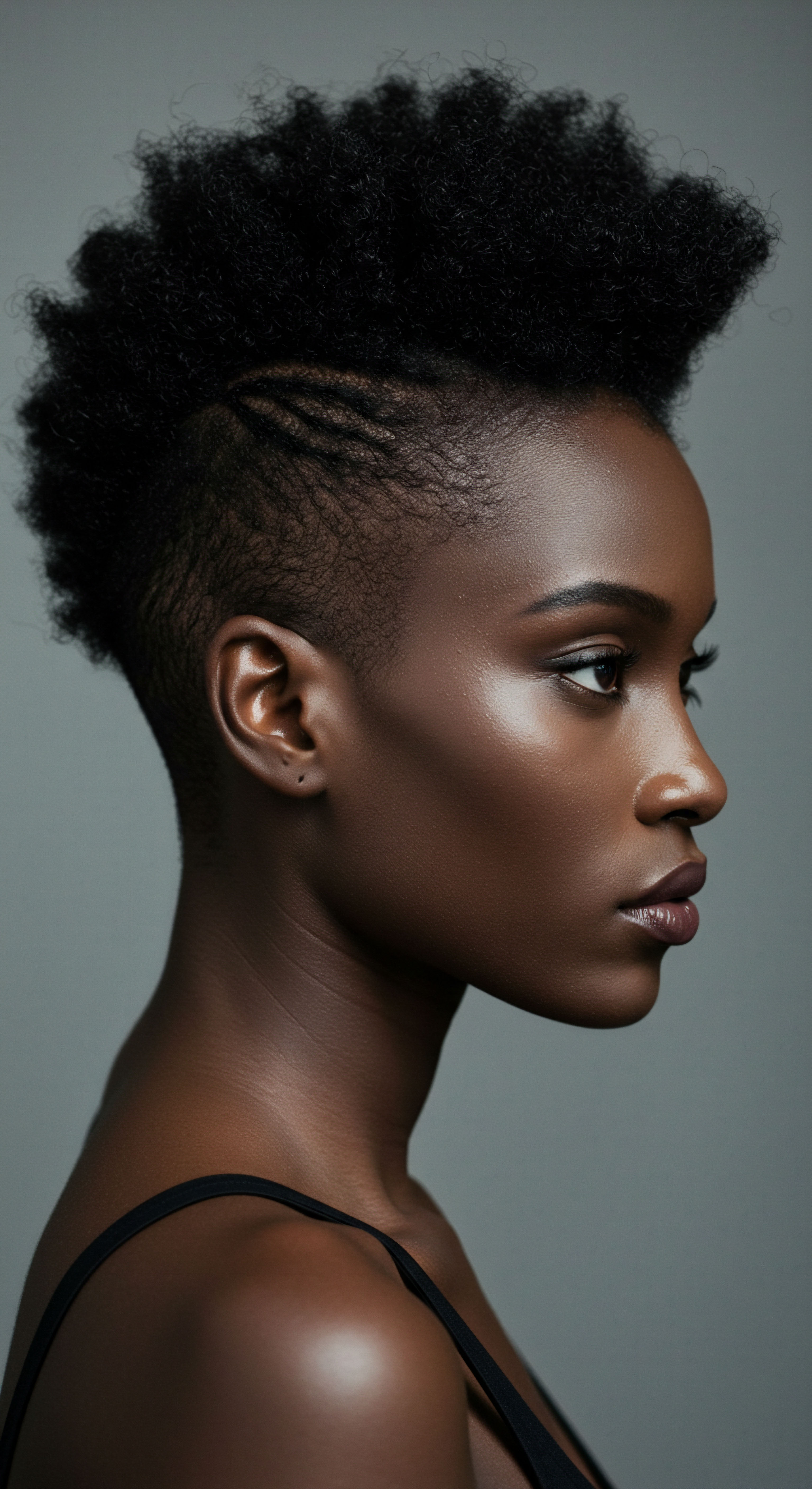
Heat Styling and Thermal Reconditioning
While modern thermal tools are a relatively recent advent, ancient African cultures likely used rudimentary forms of heat to achieve certain styling effects, albeit with different methods and intentions. Sun drying after washing, for example, would have been a common practice. While direct evidence of high-heat styling tools like hot combs in ancient Africa is less prevalent compared to post-slavery innovations, the use of warmed oils or stones for pressing and smoothing cannot be entirely dismissed.
Any such applications would have been gentle, prioritizing hair health and flexibility over extreme straightening, aligning with the overall philosophy of working with the hair’s natural qualities. The primary focus was on protecting and nourishing, not altering its fundamental structure with harsh heat.

The Complete Textured Hair Toolkit
The tools of ancient African hair care were simple yet effective, reflecting ingenuity and resourcefulness.
| Tool Type Combs |
| Materials Used Wood, bone, ivory, metal |
| Primary Purpose Detangling, parting, styling, decorative use |
| Tool Type Pins and Razors |
| Materials Used Wood, bone, stone, metal |
| Primary Purpose Sectioning, shaping, cutting |
| Tool Type Adornments |
| Materials Used Beads, cowrie shells, feathers, gold, clay, plant fibers |
| Primary Purpose Decoration, status signaling, spiritual symbolism |
| Tool Type Neckrests |
| Materials Used Wood, stone |
| Primary Purpose Preserving hairstyles during sleep |
| Tool Type These tools, often hand-carved and adorned, served both practical and symbolic functions within ancient African societies. |
The presence of specialized tools, even basic ones, highlights the dedication to hair care. Combs, for instance, were not merely utilitarian; they were often art objects, buried with their owners, signifying their importance. This careful selection and creation of tools underscore a deep respect for hair and its maintenance.

Relay
To truly grasp the significance of ancient African hair care, we must move beyond mere practices and consider the intricate web of meaning, the whispers of cultural intelligence that informed every strand. How did the physical act of grooming transcend into something far more profound? This section invites a deeper contemplation, examining the biological realities, societal structures, and spiritual convictions that shaped hair care, revealing a complex dialogue between self, community, and the cosmos.

Building Personalized Textured Hair Regimens
Ancient African hair care was inherently personalized, not in the sense of individualized product lines, but through a deep understanding of each person’s hair and its unique needs within their specific environment. Caregivers, often mothers or elder women, would observe the hair’s response to different plants, oils, and techniques, tailoring regimens over time. This adaptive approach meant that knowledge was fluid, passed down through generations, and refined by lived experience. The availability of local botanicals dictated what could be used, leading to diverse, region-specific practices.
For example, communities near shea trees utilized its butter extensively, while others might rely on different indigenous plant extracts. This bespoke nature of care, though unwritten, formed the bedrock of hair health.

The Nighttime Sanctuary ❉ Essential Sleep Protection and Bonnet Wisdom
The concept of protecting hair during sleep is not a modern invention. Ancient African cultures understood the need to preserve intricate styles and prevent damage while resting. While the modern bonnet, as we know it, is a later development, the underlying principle of hair protection during sleep was widely practiced. This could involve wrapping hair with soft cloths or using specialized neckrests, often called headrests or pillows, to keep elaborate coiffures elevated and undisturbed.
These items, sometimes found in ancient Egyptian and Nubian graves, suggest a long-standing awareness of sleep’s impact on hair integrity. The delicate nature of textured hair, prone to tangling and breakage from friction, made such protective measures essential for maintaining styles that often took hours or even days to create.

Ingredient Deep Dives for Textured Hair Needs
The pharmacopoeia of ancient African hair care was vast, drawing directly from the continent’s rich botanical diversity. These ingredients were chosen for their moisturizing, strengthening, and protective properties, intuitively addressing the specific requirements of textured hair.
Some key ingredients included:
- Shea Butter ❉ Extracted from the nuts of the shea tree, this rich butter was a staple across West Africa. Its emollient properties provided intense moisture, sealed cuticles, and offered a protective barrier against harsh sun and dry air.
- Palm Oil ❉ A versatile oil, likely used for its conditioning and emollient qualities, particularly in regions where palm trees were abundant.
- Aloe Vera ❉ While often associated with modern remedies, aloe plants were indigenous to parts of Africa and likely used for their soothing and hydrating properties on both scalp and hair.
- Chébé Powder ❉ Sourced from Chad, this powder, made from the seeds of the Chébé plant, was famously used by Bassara/Baggara Arab women for length retention. Mixed with water or shea butter, it was applied to hair to fill shaft spaces and seal the cuticle, aiding in moisture retention and preventing breakage. This traditional practice highlights a sophisticated understanding of hair structure and protective applications.

Textured Hair Problem Solving Compendium
Ancient African communities addressed hair challenges with practical solutions rooted in observation and communal knowledge. Dryness, breakage, and scalp health were likely common concerns. Remedies would involve increased application of oils and butters, specific styling choices to reduce manipulation, and herbal washes for scalp cleansing and soothing. The understanding that hair reflected overall well-being meant that addressing hair problems also involved considering diet and general health.
For example, if a woman’s hair appeared “undone” in ancient Nigeria, it could signify depression or poor health. This link underscores a holistic approach to hair issues.

Holistic Influences on Hair Health
The care of hair in ancient African cultures was inextricably tied to broader societal and spiritual beliefs. Hair was not an isolated physical attribute; it was a conduit for spiritual energy, a symbol of fertility, and a marker of social standing.
Consider the spiritual aspect ❉ many African societies believed hair, as the highest point of the body, was the closest to the divine. This belief meant that hair care was often performed by close relatives, as a strand falling into the hands of an enemy was thought to bring harm. This profound connection elevated hair care beyond mere hygiene to a sacred ritual.
A striking illustration of hair’s deeper societal meaning comes from the period of colonial rule. As historian Adetutu Omotos noted in a 2018 paper, colonialists often capitalized on the profound significance of hair in ancient African civilizations, viewing the forced shaving of African people’s hair as a strategy to strip them of identity and sever cultural ties. This deliberate act of dehumanization underscores the immense value placed on hair as a cultural anchor, revealing that its removal was not just a physical change but a profound psychological and cultural assault. This historical point, often overlooked in broader discussions of hair care, powerfully illustrates that the maintenance of traditional hair practices was, for many, an act of quiet defiance and cultural preservation in the face of oppression.
| Aspect of Life Identity and Status |
| Hair's Role Signified family history, tribe, age, marital status, wealth, social rank |
| Aspect of Life Spirituality |
| Hair's Role Believed to connect individuals to ancestors and the divine; a source of personal and spiritual power |
| Aspect of Life Fertility and Prosperity |
| Hair's Role Thick, long, neat hair could signify ability to bear healthy children and bountiful farms |
| Aspect of Life Communication |
| Hair's Role Hairstyles conveyed messages about life stages, mourning, or even political alliances |
| Aspect of Life Hair served as a visual language, conveying complex information about an individual's place within their community and the world. |
How did hair care become a symbol of resistance during times of adversity?
During the transatlantic slave trade, the forced shaving of heads was a calculated move to strip enslaved Africans of their cultural identity. Despite this, the tradition of hair care persisted. Enslaved African women, for example, braided rice seeds into their hair as a means of survival, a testament to their resilience and ingenuity. Braids also became secret maps for escape routes.
This transformation of hair from a symbol of status to a tool of survival and resistance speaks volumes about its deep-seated importance. The psychological remnants of this period, where African hair was demonized as “unprofessional” or “dirty,” still echo today. However, the continued practice and celebration of natural hair is a powerful reclamation of heritage and pride.
What were the implications of communal hair styling?
The act of styling hair was a communal activity, particularly among women. These sessions were opportunities for bonding, sharing stories, gossip, and advice. This shared experience reinforced social ties and served as a vehicle for passing down cultural knowledge, techniques, and traditions from one generation to the next. The rhythmic movements of braiding, the quiet conversation, the shared laughter – these elements formed a vital social ritual, making hair care a cornerstone of community life.
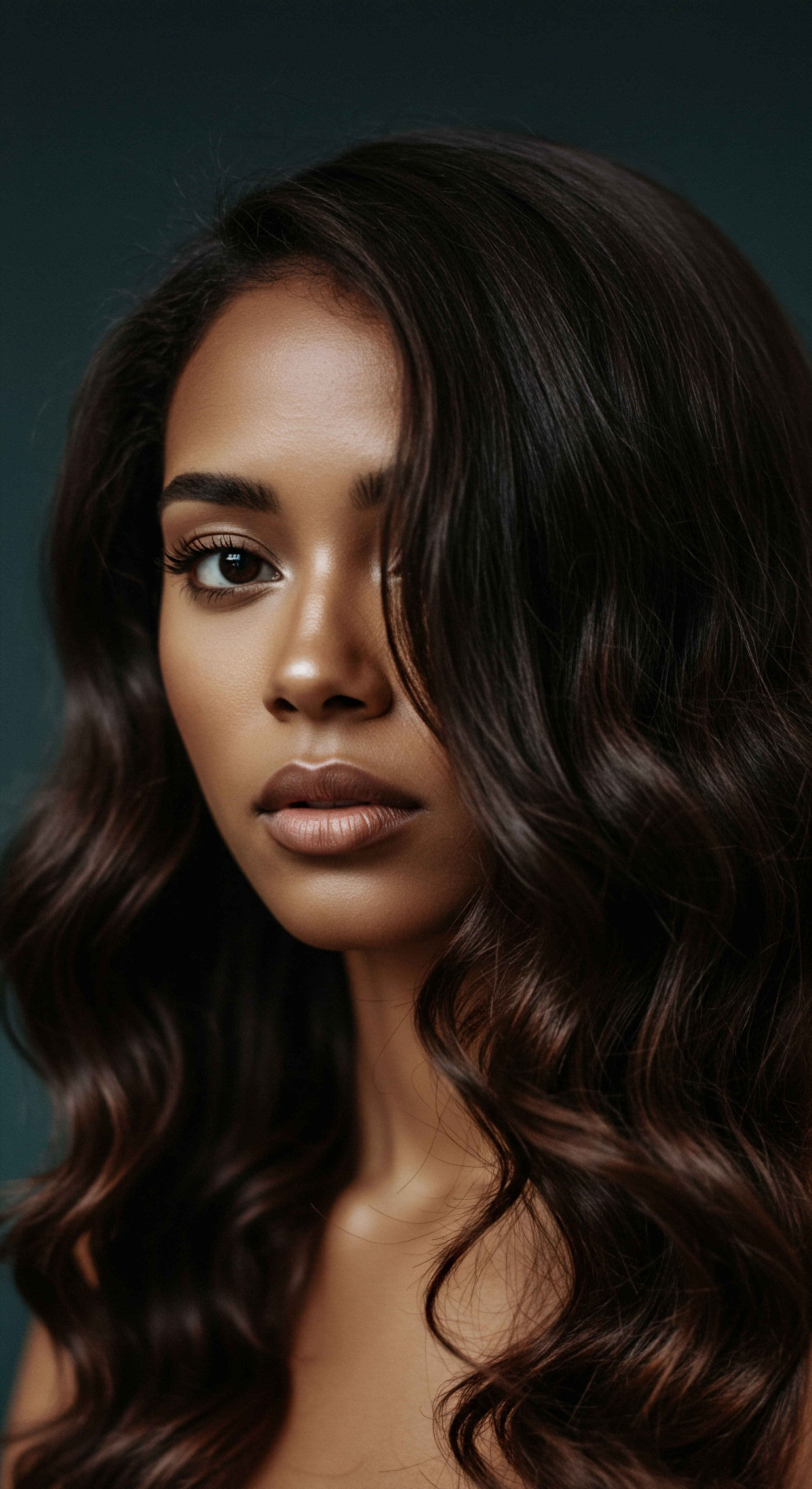
Reflection
The journey through ancient African hair care leaves us with a quiet sense of awe for the wisdom held within those long-ago practices. It is a reminder that beauty, at its truest, is not about fleeting trends or superficial appearances, but about connection ❉ connection to one’s roots, to community, and to the living world around us. The hands that braided, oiled, and adorned hair centuries ago were not merely styling; they were preserving stories, communicating status, and honoring a profound spiritual link.
Their methods, born of deep observation and respect for natural forms, continue to offer gentle guidance for our own hair journeys. Perhaps, in seeking to understand these ancient ways, we uncover not just history, but a timeless invitation to care for our strands with intention, with reverence, and with a quiet appreciation for the legacy they carry.

References
- Byrd, Ayana, and Lori L. Tharps. Hair Story ❉ Untangling the Roots of Black Hair in America. St. Martin’s Press, 2001.
- Gordon, Mark. African Hair ❉ Culture, Beauty, and the Legacy of Colonialism. University of California Press, 2017.
- Omotos, Adetutu. “The Cultural and Political Significance of Hair in Ancient African Civilizations.” Journal of Pan African Studies, vol. 11, no. 8, 2018.
- Sherrow, Victoria. Encyclopedia of Hair ❉ A Cultural History. Greenwood Press, 2006.
- Sieber, Roy. African Textiles and Decorative Arts. The Museum of Modern Art, 1972.
- Mbodj, Mohamed. “The Hair as a Symbol of Identity in African Cultures.” Columbia University, 2005.
- Blay, Yaba Amgborale. (1)ne Drop ❉ Shifting the Lens on Race. BLACKprint Press, 2013.
- Opoku, Kwabena. Traditional African Hair Styles and Adornments. Ghana Universities Press, 1985.
- Tredre, John, and Georgina Newman. The Hair Book ❉ A History of Hair. Pavilion Books, 2000.
- Lewis, Edward. The History of African Hair. Black Classic Press, 2010.
- Willie L Murrow. 400 Years without A Comb. Xlibris, 2004.